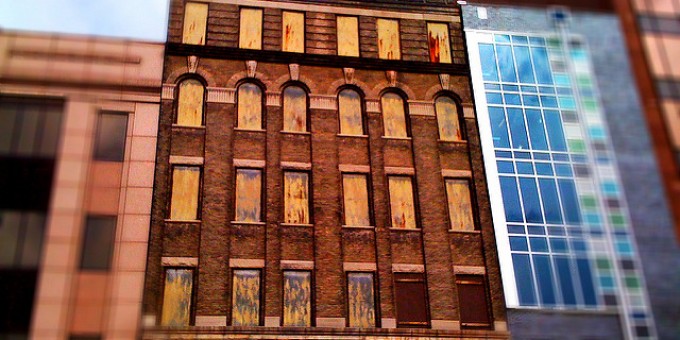
Smaller neighborhood economic disparities: a good thing. Photo by Carlos Martinez, Flickr CC https://flic.kr/p/7DqG8b
An Economic Gap Slowly Closing
Our neighborhoods affect our health, education, employment opportunities, and access to resources. Blacks and Hispanics disproportionately live in neighborhoods with fewer resources and less opportunity than Whites do, but Glenn Firebaugh and Chad R. Farrell’s work in Demography shows that this disadvantage declined between 1980 and 2010.
Considering both poverty rates and average incomes, Firebaugh and Farrell examined Census data for all metropolitan areas in the U.S. In 1980, Whites were much more likely to live in neighborhoods with higher incomes and lower poverty than average, while both Blacks and Hispanics were likeliest to live in neighborhoods with both below average annual incomes and above average poverty. By 2010, the gaps had narrowed on both sides of the average: Whites lived in neighborhoods with lower incomes and higher poverty than in 1980, while both Blacks and Hispanics lived in neighborhoods with higher incomes and lower poverty.
The research points to three separate declines that have contributed to the overall reduction in inequality: racial residential segregation (how racially divided neighborhoods are), neighborhood income segregation (differences in average income between communities), and racial income inequality (lower average incomes for Blacks and Hispanics people than Whites). At the neighborhood level, segregation remains strongly associated with inequality. The good news is that declining economic disparities at the neighborhood-level represent a positive sign for communities where people live, work, and play.
